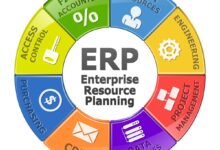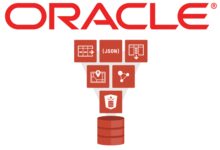ERP Migration Services: 7 Powerful Steps to Seamless Transition
Switching ERP systems isn’t just a tech upgrade—it’s a business transformation. With the right ERP migration services, companies can unlock efficiency, scalability, and smarter decision-making.
Understanding ERP Migration Services

Enterprise Resource Planning (ERP) systems are the backbone of modern businesses, integrating core functions like finance, HR, supply chain, and operations into a single platform. However, as businesses grow and technology evolves, legacy ERP systems often become outdated, inefficient, or incompatible with new business needs. This is where ERP migration services come into play.
ERP migration services refer to the professional support and strategic guidance provided by experts to help organizations transition from an existing ERP system to a new one—whether it’s moving from on-premise to cloud, upgrading to a newer version, or switching vendors entirely. The goal is to ensure a smooth, secure, and efficient transfer of data, processes, and user functionality with minimal disruption.
What Is ERP Migration?
ERP migration is more than just moving data from one system to another. It involves reconfiguring business processes, retraining staff, aligning IT infrastructure, and ensuring data integrity across departments. A successful migration requires careful planning, robust project management, and deep technical expertise.
According to Gartner, ERP systems are critical for operational efficiency, and poorly executed migrations can lead to downtime, data loss, and financial setbacks.
Why Companies Need ERP Migration Services
Many organizations attempt ERP migration in-house, only to face unexpected challenges such as data corruption, integration failures, or user resistance. Professional ERP migration services provide the experience, tools, and methodologies needed to avoid these pitfalls.
- Expertise in data mapping and cleansing
- Proven migration frameworks and timelines
- Minimized business disruption
- Compliance with industry standards and security protocols
“A well-executed ERP migration can improve operational efficiency by up to 30%, according to McKinsey & Company.”
Key Benefits of Professional ERP Migration Services
Hiring expert ERP migration services isn’t just about avoiding mistakes—it’s about maximizing the value of your new ERP investment. These services ensure that your migration delivers long-term strategic advantages.
Improved Data Accuracy and Integrity
One of the biggest risks in ERP migration is data inconsistency. Legacy systems often contain duplicate, outdated, or incomplete records. ERP migration services include comprehensive data auditing, cleansing, and validation processes to ensure that only high-quality data is transferred.
Tools like SAP Data Services or Oracle Data Integrator are often used to automate and verify data transformation, reducing human error and ensuring compliance with regulatory standards like GDPR or SOX.
Minimized Downtime and Business Continuity
Downtime during ERP migration can cost businesses thousands—or even millions—per hour in lost productivity and revenue. Professional services use phased migration strategies, parallel run testing, and rollback plans to keep operations running smoothly.
For example, a retail company migrating during peak season might use a hybrid approach, running both old and new systems simultaneously until the transition is complete. This ensures customer orders are processed without interruption.
Enhanced Security and Compliance
During migration, sensitive data is exposed to potential breaches, especially when moving to cloud-based ERP platforms like Oracle NetSuite or Microsoft Dynamics 365. ERP migration services implement encryption, access controls, and audit trails to protect data throughout the process.
They also ensure that the new system complies with industry-specific regulations such as HIPAA for healthcare or PCI-DSS for financial transactions. A report by IBM Security found that the average cost of a data breach in 2023 was $4.45 million—making security a top priority during migration.
Common Challenges in ERP Migration and How Services Help Overcome Them
ERP migration is inherently complex. Without proper planning and support, organizations face numerous obstacles that can derail the entire project.
Data Silos and Inconsistent Formats
Many companies have data scattered across multiple departments, spreadsheets, and legacy applications. ERP migration services use data integration tools and ETL (Extract, Transform, Load) processes to consolidate information into a unified format compatible with the new ERP system.
For instance, a manufacturing firm might have inventory data in one system, sales in another, and HR records in a third. Migration experts create a centralized data model that aligns with the new ERP’s architecture.
User Resistance and Change Management
Employees often resist new systems due to fear of change, lack of training, or poor user experience. ERP migration services include change management strategies such as stakeholder workshops, communication plans, and hands-on training sessions.
According to Prosci’s Change Management Research, projects with excellent change management are six times more likely to meet objectives than those without.
Integration with Third-Party Systems
Modern ERP systems must work seamlessly with CRM, e-commerce platforms, payroll software, and more. ERP migration services ensure APIs, middleware, and integration platforms (like MuleSoft or Dell Boomi) are properly configured to maintain connectivity.
For example, when a company migrates to SAP S/4HANA, migration consultants ensure that Salesforce CRM continues to sync customer data in real time.
Types of ERP Migration: Which One Do You Need?
Not all ERP migrations are the same. The type of migration depends on your current system, business goals, and technological environment. ERP migration services help you choose the right path.
On-Premise to Cloud Migration
This is one of the most common types of ERP migration today. Companies are moving away from costly, inflexible on-premise systems to scalable cloud-based solutions like Oracle Cloud ERP or Microsoft Dynamics 365 Finance.
Benefits include lower IT overhead, automatic updates, remote access, and faster deployment. However, this type of migration requires careful attention to internet bandwidth, data sovereignty laws, and vendor lock-in risks.
Version Upgrade Migration
Some organizations aren’t switching platforms but upgrading to a newer version of their existing ERP—such as moving from SAP ECC to SAP S/4HANA. While this seems simpler, it often involves significant reconfiguration due to architectural changes.
ERP migration services provide technical assessments, code remediation, and performance tuning to ensure compatibility and optimal performance post-upgrade.
Vendor Switch Migration
When a company decides to switch ERP vendors—say, from Oracle E-Business Suite to NetSuite—it faces a complete system overhaul. This type of migration is the most complex, requiring full data mapping, process redesign, and extensive user training.
Professional ERP migration services offer vendor-neutral consulting to help evaluate options and execute the switch with minimal risk.
The 7-Step ERP Migration Process with Professional Services
A structured approach is essential for successful ERP migration. Leading ERP migration services follow a proven methodology that breaks the process into manageable phases.
Step 1: Assessment and Planning
This initial phase involves evaluating the current ERP system, identifying pain points, defining business goals, and setting migration objectives. Consultants conduct stakeholder interviews, system audits, and gap analysis.
Key deliverables include a migration roadmap, timeline, budget estimate, and risk assessment. This phase sets the foundation for the entire project.
Step 2: System Selection and Design
If switching vendors, this step involves selecting the right ERP platform based on scalability, industry fit, and total cost of ownership. ERP migration services often provide RFP (Request for Proposal) support and vendor evaluation.
Once the system is chosen, consultants design the new architecture, including data models, workflows, and integration points.
Step 3: Data Preparation and Cleansing
Data quality is critical. This phase includes extracting data from the legacy system, identifying duplicates, correcting errors, and standardizing formats. Tools like Informatica or Talend are commonly used.
Migration teams also classify data by importance—deciding what to migrate, archive, or discard—to reduce clutter and improve system performance.
Step 4: Configuration and Customization
The new ERP system is configured to match business processes. This includes setting up modules (finance, inventory, HR), defining user roles, and customizing dashboards.
ERP migration services ensure that custom code or legacy integrations are adapted to work with the new system, avoiding functionality loss.
Step 5: Testing and Validation
Before going live, extensive testing is conducted. This includes unit testing, integration testing, user acceptance testing (UAT), and performance testing.
Migrating companies often run parallel systems for a few weeks to compare outputs and validate accuracy. Any issues are resolved before cutover.
Step 6: Data Migration and Cutover
This is the actual transfer of data and activation of the new system. ERP migration services schedule the cutover during low-activity periods (e.g., weekends or holidays) to minimize disruption.
The process is monitored in real time, with rollback procedures in place in case of failure. Data consistency checks are performed immediately after migration.
Step 7: Post-Migration Support and Optimization
The job doesn’t end at go-live. ERP migration services provide post-migration support, including troubleshooting, user training refreshers, and performance monitoring.
They also help optimize the system by analyzing usage patterns, refining workflows, and implementing additional features over time.
Choosing the Right ERP Migration Services Provider
Not all ERP migration service providers are created equal. Selecting the right partner can make or break your migration success.
Look for Industry-Specific Expertise
Different industries have unique ERP requirements. A provider with experience in manufacturing may not be the best fit for a healthcare organization due to compliance and workflow differences.
Ask potential vendors about their track record in your sector and request case studies or client references.
Evaluate Technical Capabilities and Certifications
Ensure the provider has certified consultants for your chosen ERP platform—such as SAP, Oracle, or Microsoft. Certifications indicate up-to-date knowledge and adherence to best practices.
Also, assess their proficiency in data migration tools, cloud architecture, and cybersecurity protocols.
Assess Project Management Approach
A successful migration requires strong project management. Look for providers that use agile methodologies, provide regular progress reports, and assign a dedicated project manager.
Clear communication, defined milestones, and risk mitigation strategies are signs of a professional ERP migration services team.
Top ERP Migration Tools and Technologies
Modern ERP migration services rely on advanced tools to automate and streamline the process. These technologies enhance accuracy, speed, and scalability.
Data Migration Tools
Tools like Sterling Transformation, SAP Migration Cockpit, and Oracle Data Integrator help automate data extraction, transformation, and loading. They reduce manual effort and ensure consistency across large datasets.
Integration Platforms
Platforms like MuleSoft, Dell Boomi, and Informatica iPaaS enable seamless connectivity between the new ERP and third-party applications. They support real-time data sync and API management.
Cloud Migration Frameworks
Vendors like AWS, Microsoft Azure, and Google Cloud offer migration frameworks specifically designed for ERP systems. These include assessment tools, migration accelerators, and security templates.
For example, AWS SAP Migration provides step-by-step guidance for moving SAP systems to the cloud.
Real-World Case Studies: Successful ERP Migration Services in Action
Understanding how other companies have navigated ERP migration can provide valuable insights.
Case Study 1: Global Manufacturer Moves to SAP S/4HANA
A multinational manufacturing company with 50+ factories was using an outdated SAP ECC system. They partnered with an ERP migration services provider to transition to SAP S/4HANA.
The migration included data consolidation from 12 regional databases, integration with IoT devices on the factory floor, and real-time analytics implementation. The result? A 40% reduction in reporting time and 25% improvement in inventory accuracy.
Case Study 2: Retail Chain Migrates to Oracle NetSuite Cloud
A mid-sized retail chain was struggling with disconnected systems for sales, inventory, and e-commerce. They chose Oracle NetSuite and hired ERP migration services to handle the transition.
The provider implemented a phased migration over six months, trained 500+ employees, and integrated NetSuite with Shopify and Amazon. Post-migration, the company saw a 35% increase in order fulfillment speed.
Case Study 3: Healthcare Provider Upgrades to Microsoft Dynamics 365
A regional hospital network upgraded from a legacy financial system to Microsoft Dynamics 365 for Finance and Operations. The ERP migration services team ensured HIPAA compliance, migrated patient billing data securely, and integrated with electronic health record (EHR) systems.
The new system reduced invoice processing time by 50% and improved audit readiness.
Future Trends in ERP Migration Services
The landscape of ERP migration is evolving rapidly due to advancements in AI, cloud computing, and automation.
AI-Powered Data Mapping
Artificial intelligence is being used to automatically map data fields between legacy and new systems, reducing manual effort and errors. AI can also predict data quality issues before migration begins.
Zero-Downtime Migration Solutions
Emerging technologies now allow for continuous data replication, enabling organizations to switch systems without any downtime. This is especially valuable for 24/7 operations like logistics or healthcare.
Increased Focus on User Experience
Modern ERP migration services are placing greater emphasis on UX design, ensuring that the new system is intuitive and adoption rates are high. This includes mobile access, voice commands, and personalized dashboards.
What are ERP migration services?
ERP migration services are professional solutions that help organizations transition from an old ERP system to a new one. This includes data transfer, system configuration, user training, and post-go-live support to ensure a smooth and successful upgrade or platform switch.
How long does an ERP migration typically take?
The duration varies based on complexity, but most ERP migrations take between 6 to 18 months. Simple upgrades may take a few months, while full vendor switches or cloud migrations can take over a year.
Is cloud ERP migration safe for sensitive data?
Yes, when done with professional ERP migration services. They implement encryption, access controls, and compliance measures to protect sensitive data during and after migration. Cloud providers like AWS and Azure also offer robust security certifications.
Can I migrate ERP systems without external help?
While technically possible, it’s risky. Internal teams often lack the specialized tools, experience, and bandwidth to handle complex migrations. Professional ERP migration services reduce risks, save time, and ensure better outcomes.
What is the cost of ERP migration services?
Costs vary widely based on scope, but typically range from $50,000 for small businesses to several million for large enterprises. Factors include data volume, customization needs, and level of support required.
ERP migration services are no longer a luxury—they’re a necessity for businesses aiming to stay competitive in a digital-first world. From minimizing downtime to ensuring data integrity and compliance, professional migration support transforms a high-risk project into a strategic advantage. By understanding the process, choosing the right provider, and leveraging modern tools, organizations can achieve a seamless transition that drives long-term growth and innovation. Whether you’re moving to the cloud, upgrading versions, or switching vendors, investing in expert ERP migration services is the smartest move you can make.
Further Reading:







